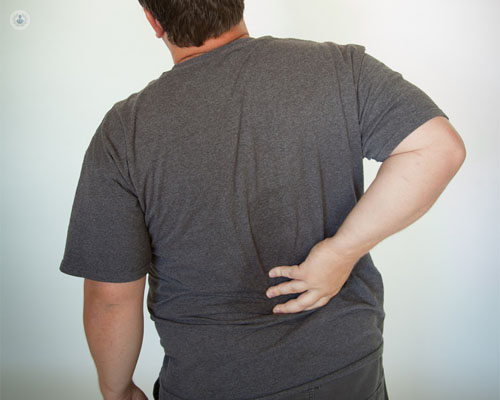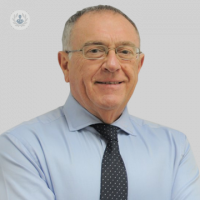Renal calculi or stones in the kidneys
Written by:As the name indicates, the stones in the kidney are stones that are found in the kidneys. It is considered that 10 out of 100 people will have a stone in their kidneys at least once in their life and 30 out of 100 patients with kidney stones will have to be admitted to a hospital at least for a few hours to be able to control the pain Many times it is very intense, although the stones do not hurt themselves. The pain occurs if the stone causes obstruction to the passage of urine (obstructive lithiasis).
The symptoms are: pain in the back, on one side of the spine and below the ribs ( renal colic ). The pain can reach the groin, it can even hurt on both sides at the same time, although it is very rare. This pain caused by urinary stones (stones) is often accompanied by nausea and vomiting, blood in the urine, many urges to urinate or burning when urine passes through the urethra. It is usual for the person with urinary stones to have other family members affected with the same problem. To perform the diagnosis, the urologist will perform a simple x-ray and ultrasound. If the stone is of uric acid it will not be seen in the simple radiograph, but it will be seen in the ultrasound or in the scanner (computed tomography). The ultrasound will also serve to detect the presence of urinary obstruction (dilation). If there is obstruction, the urologist will probably perform an intravenous urography (IVU), which involves the injection of a contrast fluid into a vein in the arm that is removed by the kidneys and allows the external ducts of the kidney to be visualized.

When the stone is expelled it is important to keep it to study its composition, which can help to choose the correct treatment to avoid that another stone of the same type is made. It is important to remember that between 70 and 80 of every 100 stones are eliminated spontaneously with the urine in the 48 hours following the onset of pain (colic).
Currently, the vast majority of stones that are not removed alone can be broken into small pieces with a machine called external shock wave lithotripsy (ESWL) and by spinal anesthesia, although in some places they do it without the need for anesthesia.. Some patients who have obstruction will need to place a tube (catheter) that goes from the kidney to the bladder to allow the exit of urine. In other cases, the stone can be removed with a metal device called ureteroscope that is inserted into the ureter, through the urethra and through which a device called lithotriver that breaks the stone is passed.. Therefore, in less than 5 out of 100 cases it is necessary to perform an open surgery for the treatment of a urinary stone.
Finally, point out that about half of the patients who have had a stone will develop another one in 5-10 years.
Reduce the possibility of having another stone
1. The most important thing is to drink a lot of liquid (mainly water), between 10 and 12 large glasses of each day. This prevents urine from concentrating and decreases the possibility of crystals being produced. To control if you are drinking enough fluid, you should look at the color of the urine, if it is dark yellow, you should drink more.
2. Diet is also important. If you had calcium oxalate stones or uric acid, you should reduce the amount of protein (meat, sausages, organ meats, etc.) in your meals.
3. Diuretic medications such as hydrochlorothiazide may help decrease the elimination of calcium in the urine. Potassium citrate binds calcium in the urine and helps eliminate it safely. Allopurinol causes the body to produce less uric acid and is useful in patients with gout. In the rare cases of cystine stones, penicillamine may be useful.
In any case, remember that it is very important to consult with a urologist, he will prescribe and control the treatment with these products.


